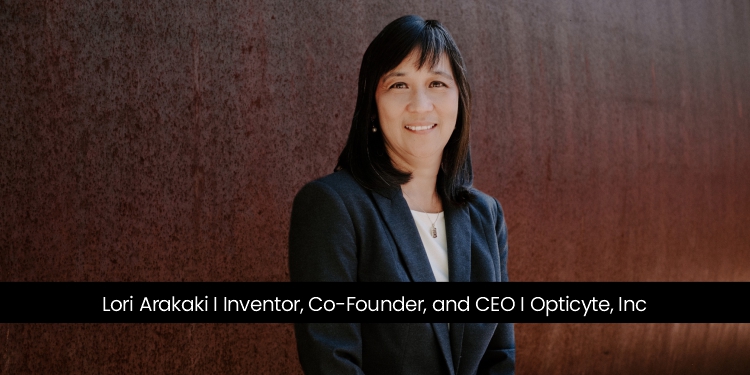Opticyte is pioneering medical innovation with VitalO2, a ground-breaking noninvasive device that delivers two critical measurements: cellular oxygenation (Cell O2) and accurate pulse oximetry for all skin tones. By harnessing the power of optical spectroscopy and machine learning, VitalO2 will enable clinicians to deliver personalized and optimized care to critically ill patients. Under the visionary leadership of CEO Lori Arakaki, a bioengineer with a proven track record of innovation, Opticyte is poised to revolutionize patient monitoring.
Transforming Patient Monitoring with VitalO2
The mission of Opticyte is to revolutionize patient care with VitalO2, an advanced medical device that noninvasively measures cellular oxygenation and pulse oximetry with unprecedented accuracy. Leveraging optical spectroscopy and machine learning, VitalO2 measures over 800 wavelengths, ensuring reliable readings across diverse patient populations. As CEO, the founder is driven by a passion for improving patient outcomes and is committed to bringing this innovation to hospitals, fueled by a determination to make a notable impact.
Lori’s Journey: From Geeky Student to Visionary CEO
Lori’s journey began with a strong foundation in academics. She pursued her PhD in Bioengineering from the University of Washington, and she was a research scientist there for 15 years before founding Opticyte. As a bioengineer, Lori’s goal has always been to improve patient outcomes in the clinical setting. Now, as the CEO of Opticyte, she is leading the charge in revolutionizing patient care with VitalO2, a groundbreaking device that delivers cellular oxygenation and accurate pulse oximetry for all skin tones.
The Genesis of Opticyte
Opticyte was founded based on the CEO, Lori Arakaki’s, PhD dissertation research at the University of Washington, where she pioneered using optical spectroscopy to measure cellular oxygenation in vivo, specifically in the hind limb of rats. While this measurement technique has been used in various laboratory studies, it required a calibration step and wasn’t suitable for real-time measures.
Opticyte was spun out of the university research lab when real-time cellular oxygenation measurements became feasible, a crucial step for developing a medical device for hospitals. Opticyte received a Phase I small business grant from NIH, which enabled product development work to begin. The Phase I grant led to Phase II and IIB grants, totaling $4.05 million in non-dilutive funding.
Overcoming Early-Stage Hurdles
Developing VitalO2 posed major challenges. Transitioning from a lab prototype to a commercial device needs experience in optics and engineering design. Some key hurdles included designing a system to align optical components and creating a disposable sensor that maintains contact with the palm of the hand. Despite the COVID pandemic slowing clinical study enrollment, the team persevered and completed a first in human study on hospital patients with sepsis. The data set led to the FDA granting Opticyte its first Breakthrough Device Designation for Cell O2.
Validating the Need for Cellular Oxygenation Monitoring
Opticyte recognized sepsis as a big problem, with 350,000 Americans dying annually and a 4-9% increase in mortality risk for every hour treatment is delayed. Physicians in various specialties expressed interest in a device providing an immediate, definitive assessment of oxygenation within vital organs. Currently, vital signs are not specific to organ dysfunction, leading to delayed treatment. Continuous Cell O2 monitoring will provide rapid and accurate insights into organ dysfunction, supporting timely treatment decisions, streamlined evaluation cycles, and potentially life-saving interventions.
The Need for Accurate Pulse Oximetry
The COVID pandemic unmasked the problem of today’s pulse oximeters being inaccurate in people with dark skin. Mortality rates in early COVID were about twice as high in Black patients compared to White patients, due in part to pulse oximeters incorrectly registering high values in Black patients that made them appear more healthy than they actually were. Treatment was delayed, contributing to higher mortality. Opticyte’s new pulse oximetry technology is accurate in people of all skin tones, light to dark. The FDA has granted Opticyte its second Breakthrough Device Designation for racially unbiased pulse oximetry.
Building a Dynamic Team
Opticyte has assembled a team of experienced advisors, a Board of Directors with medical device expertise, and a Scientific Advisory Board comprising board-certified physicians in emergency medicine and critical care. The company’s small, effective team and talented service providers enable effective product development, algorithm development, and regulatory affairs while maintaining capital efficiency.
Integrating Patient-Centric Values in Culture
Opticyte prioritizes patient-centric values by focusing on delivering definitive information for clinicians to provide better care. The company’s technical team strives for accuracy in Cell O2 and pulse oximetry, aiming for breakthrough technology that works for everyone. Notably, Opticyte’s Cell O2 algorithm and pulse oximetry technology are skin tone agnostic, addressing the issue of racial bias in current pulse oximeters and promoting equitable healthcare results.
Guiding Principles for Partnerships and Pilot Sites
Opticyte’s partnerships are guided by collaborations with key opinion leaders in relevant fields, such as sepsis, cardiac surgery, and anemia. These clinician-scientists provide valuable guidance on study protocol design, data interpretation, and IRB approval, ensuring the success of clinical trials.
Balancing Science and Urgency
Lori prioritizes effective communication with her team and the company’s stakeholders to balance deep science with commercial urgency. By keeping investors informed of steady growth, the company ensures support for its mission to bring VitalO2 to market, driving innovation and meeting business objectives.
Promising Findings with VitalO2
The early-stage clinical use of VitalO2 has shown promising results, enabling physicians to gain valuable insights into patient status. Some of the key findings include: Cell O2 is lower in sepsis than in patients who do not have sepsis. These data indicate that Cell O2 will be effective at triage to help identify patients who need to be treated quickly. Cell O2 has the potential to help make better transfusion decisions, particularly when combined with low hematocrit. Low Cell O2 is correlated with vasoplegia in cardiac surgery patients, allowing for optimized care and potentially reducing complications.
Opticyte’s Vision for Success: Saving Lives
For Opticyte, success extends beyond regulatory approval to ultimately save lives by reducing organ failure. By providing clinicians with real-time insights into patients’ oxygenation status, Opticyte aims to prevent organ failure resulting from many different conditions, including sepsis, trauma, respiratory failure (e.g., pneumonia, COVID), and cardiac failure.
Opticyte: Revolutionizing Critical Care
VitalO2 is poised to transform critical care by enabling early detection of patients at risk of organ failure. The dual measurement capability of Cell O2 and pulse oximetry will provide clinicians with the full picture of oxygenation from O2 supply in arteries to O2 delivery to cells of vital organs. With insight into the reasons for low O2 in cells, clinicians will be able to make more accurate, timely diagnoses and provide targeted, individualized treatments. This technology will ultimately improve patient outcomes and reduce hospital readmissions.
The Future of Patient Monitoring: Opticyte’s Vision
Lori Arakaki envisions a future where patient monitoring provides accurate, real-time insights, enabling clinicians to make informed decisions and deliver precise care. Inspired by the futuristic medical tricorder from Star Trek, Opticyte is leading the way forward with the VitalO2. It is a breakthrough device that noninvasively measures cellular oxygenation and pulse oximetry. By providing immediate and actionable data, VitalO2 will empower clinicians to tailor treatment, reduce organ failure, and save lives, marking a significant step forward in patient care for everyone.















 The Inc Media is one of the most renowned global Online Business Magazines, that carries news stories about entrepreneurship, small business management, and business. Being a global business magazine, we carve for influential stories and try to take them globally to uplift the business standards and educate the people about new innovations in the business world...
The Inc Media is one of the most renowned global Online Business Magazines, that carries news stories about entrepreneurship, small business management, and business. Being a global business magazine, we carve for influential stories and try to take them globally to uplift the business standards and educate the people about new innovations in the business world...